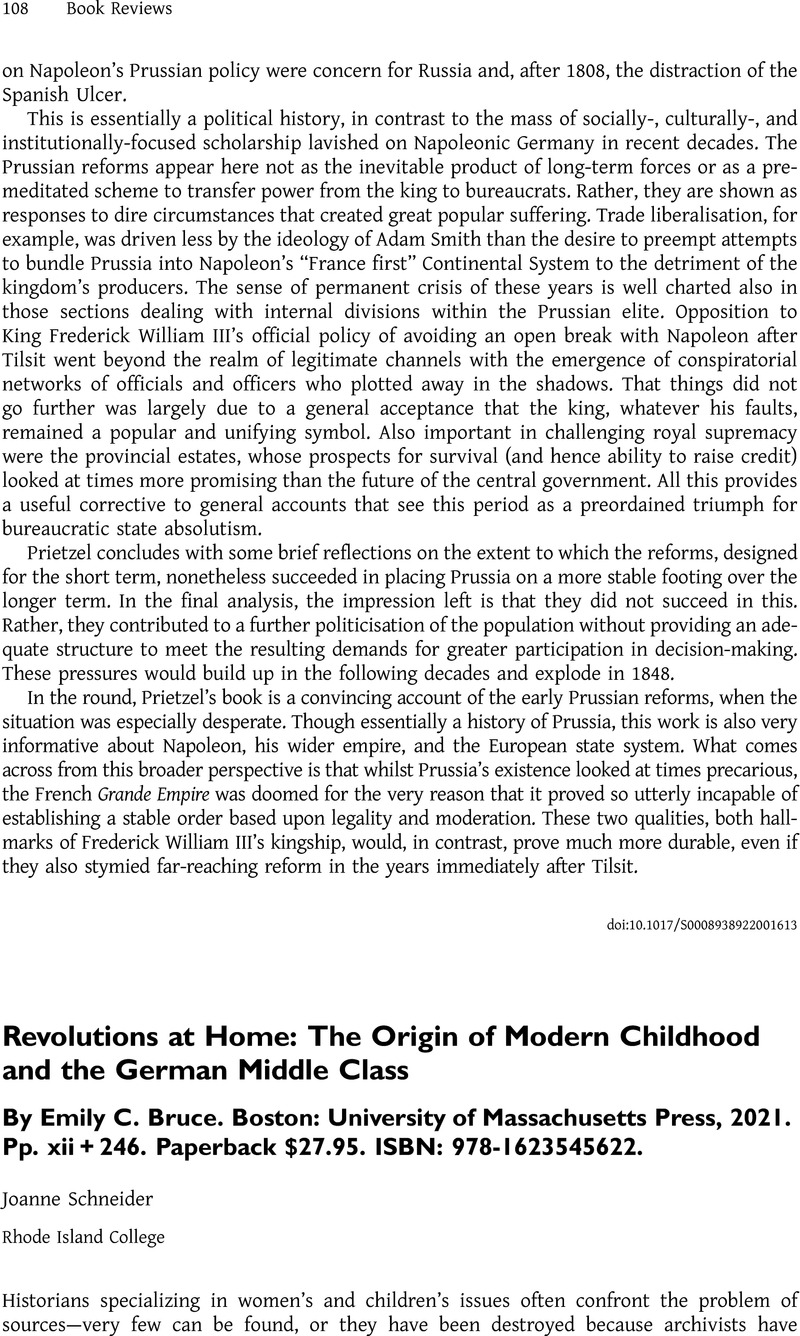No CrossRef data available.
Article contents
Revolutions at Home: The Origin of Modern Childhood and the German Middle Class By Emily C. Bruce. Boston: University of Massachusetts Press, 2021. Pp. xii + 246. Paperback $27.95. ISBN: 978-1623545622.
Review products
Revolutions at Home: The Origin of Modern Childhood and the German Middle Class By Emily C. Bruce. Boston: University of Massachusetts Press, 2021. Pp. xii + 246. Paperback $27.95. ISBN: 978-1623545622.
Published online by Cambridge University Press: 24 March 2023
Abstract
An abstract is not available for this content so a preview has been provided. Please use the Get access link above for information on how to access this content.

- Type
- Book Review
- Information
- Copyright
- Copyright © The Author(s), 2023. Published by Cambridge University Press on behalf of Central European History Society of the American Historical Association


